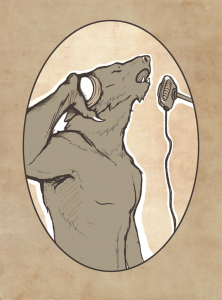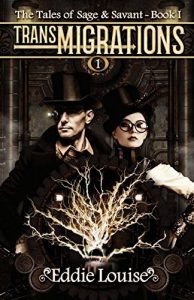An essay by Professor Caldwell Mook, as provided by Nick Morrish
Art by Ariel Alian Wilson
As Mithering Professor of General Negativity, I regularly receive requests to peer review outlandish scientific papers. I generally reject most of them out of hand as either beneath contempt, or simply too dull for words. However, one paper caught my eye recently: a small-scale experiment involving an anti-gravity field and a hamster.
Readers may be familiar with the work of Dr Drax Moon. His ridiculous claims often feature in the popular media, and he is frankly a laughing-stock even amongst the para-rational scientific community.
In this particular experiment, he allegedly caused the unfortunate rodent to float 3.75 millimeters above the ground. Quite an astounding claim, though Dr Moon does go on to clarify that at least one of its whiskers was still in contact with terra firma at all times.
Of course, anti-gravity is entirely possible at the quantum level, but I considered the elevation of even a small mammal beyond the ability of the most brilliant scientist, let alone a dim-witted charlatan such as Dr Moon.
I began to pen a withering review of his paper, but then reconsidered my actions. I emailed him instead, requesting a demonstration of his remarkable findings. I hoped to witness his abject failure and looked forward to the possibility of humiliating him in person, as well as in print and in my popular blog (blogoff.compaleteanduttergarbage.com).
When I arrived at Dr Moon’s home, it became clear that he was not utilizing quantum principles. His apparatus was rudimentary in nature and appeared to have been scavenged from discarded household appliances. Indeed, he was using his kitchen as a laboratory, and I discerned several household utensils lodged within the experimental apparatus.
Before we began, I gave him the opportunity to explain his theory in detail, but he declined, which unfortunately is rather typical of the man.
“I am a practical scientist,” he said. “A good experiment is better than a thousand theories. And a bad experiment is better than a dozen firework displays.”
You can imagine my concern at this statement, and I resolved to vacate the premises and watch the experiment through the letterbox. I had forgotten to bring safety goggles, so instead I took a large glass storage jar from the kitchen and placed it over my head. This attracted some unwelcome comments from passers-by, but I have always considered personal safety more important than mere dignity.

I had forgotten to bring safety goggles, so instead I took a large glass storage jar from the kitchen and placed it over my head. This attracted some unwelcome comments from passers-by, but I have always considered personal safety more important than mere dignity.
To read the rest of this story, check out the Mad Scientist Journal: Spring 2018 collection.
Professor Caldwell Mook holds the Mithering Chair of General Negativity at the University of Leeds, England. He specializes in pre-emptive risk analyses for technology that has yet to be invented. Professor Mook regularly offers discouragement and derision to scientists and engineers around the world.
Nick Morrish is an increasingly mad engineer from Yorkshire, England. During a long and futile career, he has worked for a number of frankly certifiable multinational companies. He clings to the last vestiges of sanity by writing serious and truthful stories about the nature of existence. Since no one else seems to observe truth in quite the same way, his work is often mistaken for satire or fantasy.
Ariel Alian Wilson is a few things: artist, writer, gamer, and role-player. Having dabbled in a few different art mediums, Ariel has been drawing since she was small, having always held a passion for it. She’s always juggling numerous projects. She currently lives in Seattle with her cat, Persephone. You can find doodles, sketches, and more at her blog www.winndycakesart.tumblr.com.
“What Goes Down Must Come Up” is © 2018 Nick Morrish
Art accompanying story is © 2018 Ariel Alian Wilson


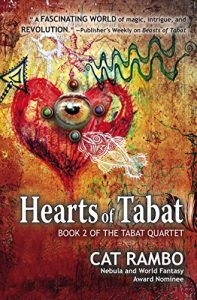 Several of our MSJ alumni have recently released books that may be of interest to our readers.
Several of our MSJ alumni have recently released books that may be of interest to our readers.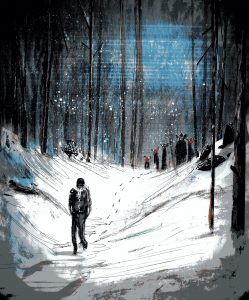

 As Told by Things
As Told by Things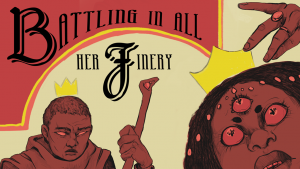 We posted this to the Kickstarter at the end of May, but we decided to share it here as well!
We posted this to the Kickstarter at the end of May, but we decided to share it here as well!